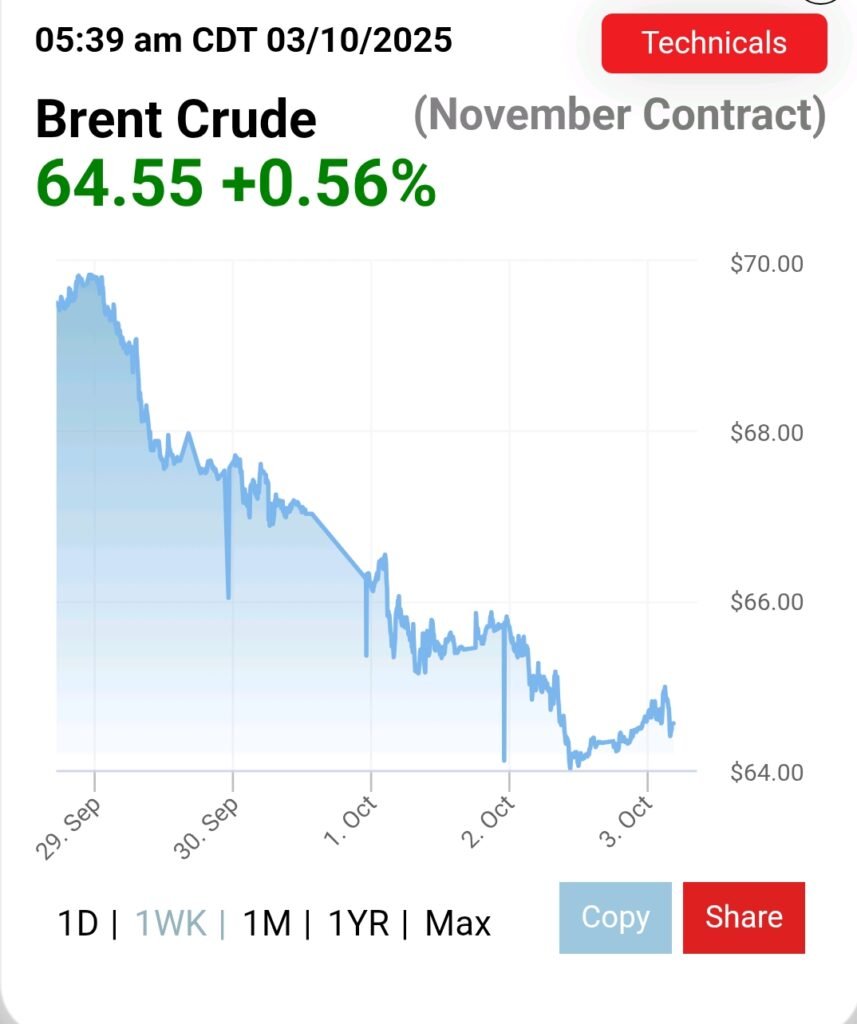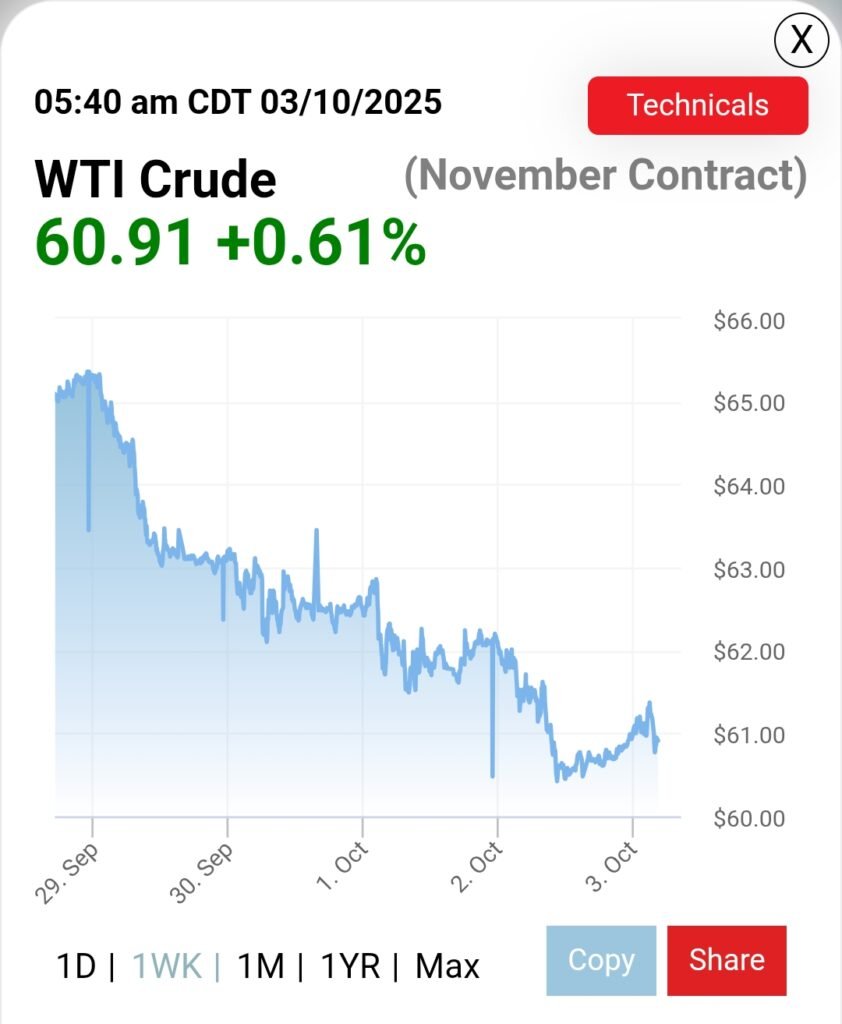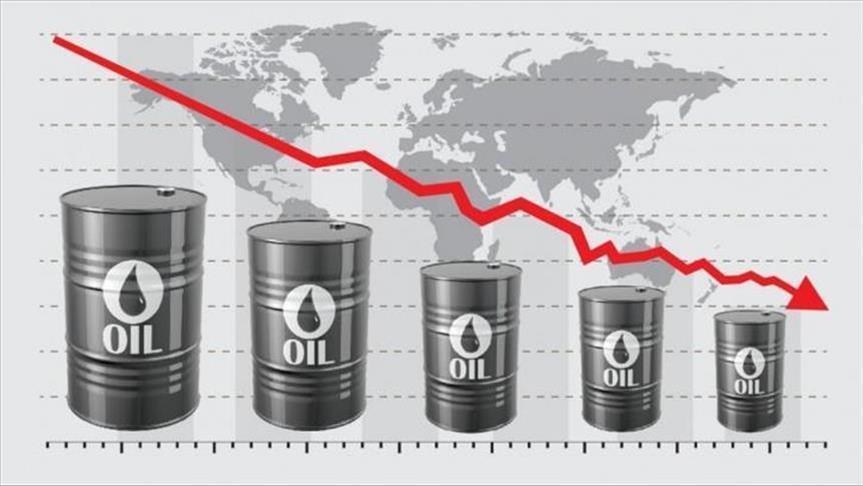Global crude oil prices are poised for their sharpest weekly decline in four months amid growing expectations that OPEC+ will extend its production boost, intensifying concerns of a potential supply glut.
Reports ahead of the group’s Sunday meeting suggest that producers may add another half a million barrels per day (bpd) to global output in October, a move analysts say could exert further downward pressure on already weakened prices.
At the time of writing, Brent crude was trading at $64.55 per barrel, while U.S. benchmark West Texas Intermediate (WTI) stood at $60.91 per barrel.

Both benchmarks were up slightly from Thursday’s close but had fallen steadily since the start of the week. According to Reuters, Brent had lost 8.3% and WTI 7.6%, marking their steepest declines since June.
OPEC+ Under Pressure
The Organization of the Petroleum Exporting Countries and its allies, collectively known as OPEC+, have been gradually easing supply restrictions this year as global demand rebounded from pandemic-era lows.
The latest reports suggest the group may accelerate this process by adding 500,000 bpd in October.

ING analysts warned in a note, “This could be a turning point for the market,” highlighting the risk of oversupply if demand growth falters. However, not all market watchers are convinced that the increase will be that large.
Goldman Sachs, for example, projected earlier this week that OPEC+ would raise production by just 140,000 bpd, though it acknowledged that market fundamentals might justify a bigger increase.
Goldman’s commodity team noted, “Demand from Asia remains solid, and we see downside risks to Russian oil production,” pointing to resilient consumption in China and India.
Demand Signals Mixed

Despite the downward price trend, some indicators suggest demand fundamentals remain supportive. Vandana Hari of Vanda Insights highlighted China’s stockpiling activity and the seasonal uptick in demand as the northern hemisphere enters heating season.
“We may see stronger consumption in the coming weeks, which could absorb some of the extra barrels.”
Vandana Hari of Vanda Insights
Still, other analysts pointed to signs of oversupply. Bloomberg reported that between 6 million and 12 million barrels of Middle Eastern oil cargoes remained unsold in the September spot market cycle, with deliveries scheduled for November and December.
Traditionally, these cargoes would find ready buyers in India or China. But this time, traders say, demand has been unexpectedly tepid.
In the United States, government data showed crude stockpiles falling to their lowest level in eight months. The decline was initially seen as a bullish signal, but broader sentiment has shifted as traders weigh the prospect of fresh OPEC+ supply.
Balancing Supply and Demand

The divergence of views underscores the delicate balancing act OPEC+ faces. On one hand, high prices risk slowing global demand, especially in emerging economies grappling with currency depreciation and inflation.
On the other hand, expanding production too quickly could flood the market and drive prices to levels unsustainable for producers themselves.
As the October 5 meeting approaches, oil markets remain on edge. Analysts say that the outcome will not only determine the near-term trajectory of prices but also signal how OPEC+ intends to navigate an increasingly uncertain demand outlook heading into winter.
For consumers, the latest developments could bring some respite at the pumps, as falling crude prices typically translate into lower fuel costs. But for oil-dependent economies, the pressure on revenues could be significant if prices remain under $70 a barrel.
READ ALSO: Market Cheers as Ghana’s Treasury Auction Breaks Four-Week Drought with 15.8% Oversubscription























